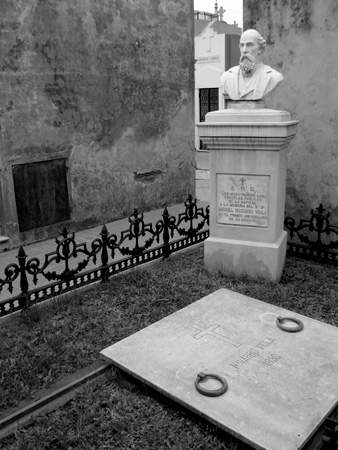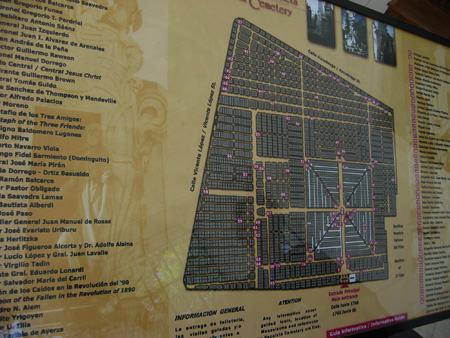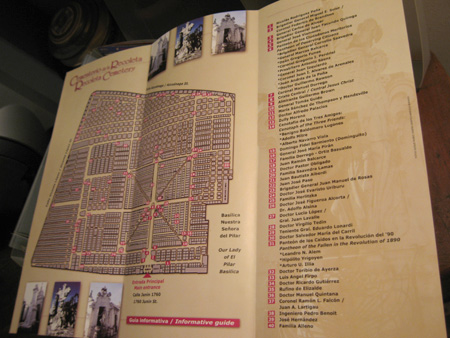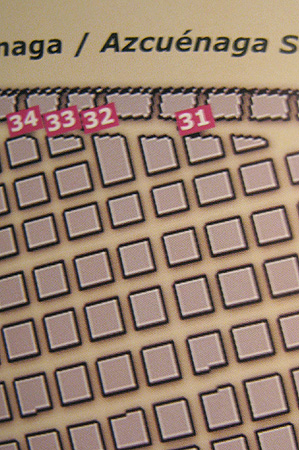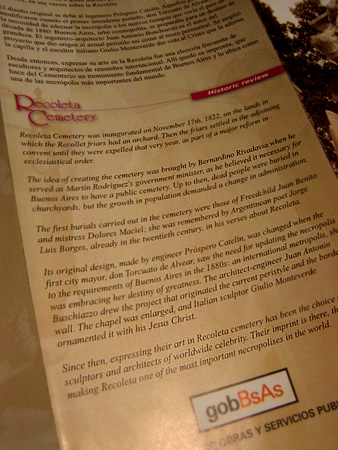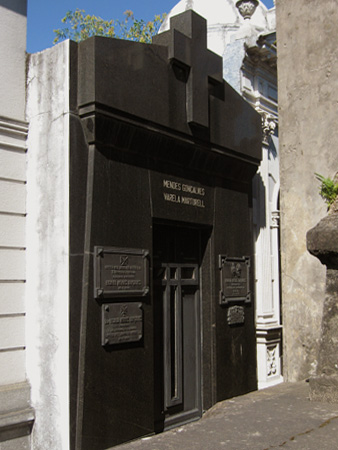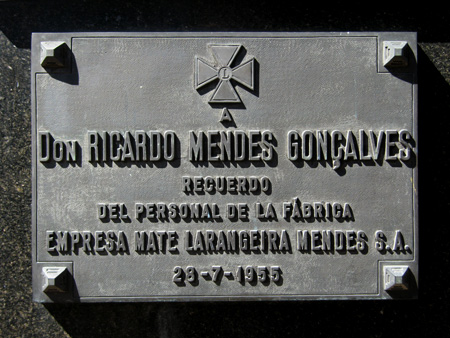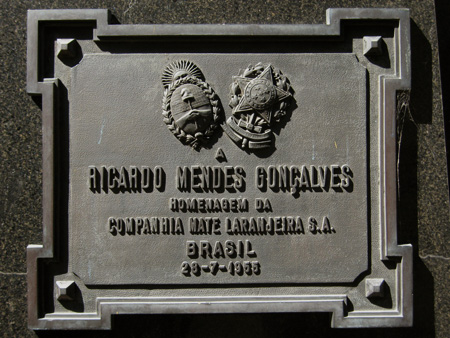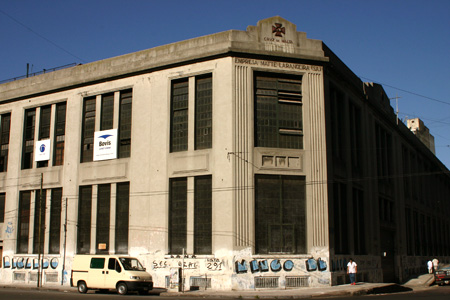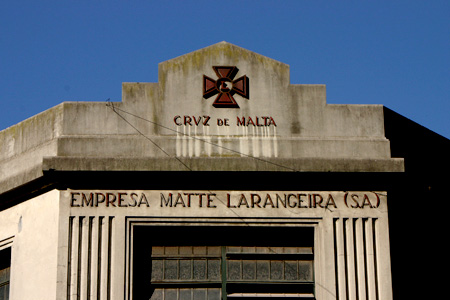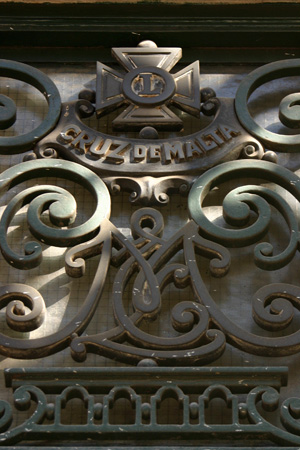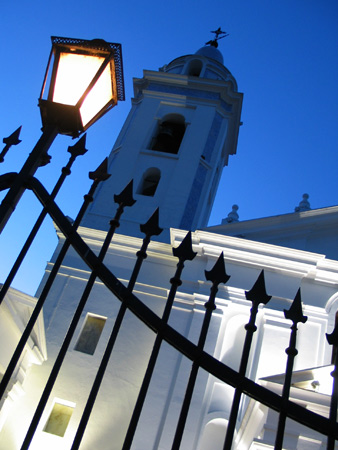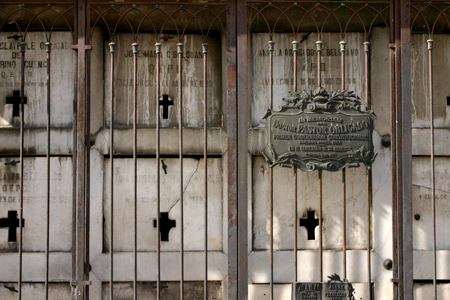
A small gallery of niches holds the remains of Pastor Obligado, a key player in national politics after gaining independence from Spain. Born in 1818 in Buenos Aires, Obligado studied law & received his degree in 1845. Juan Manuel de Rosas ruled the new nation with an iron fist at that time, & Obligado was a firm supporter due to his upper-class background. But as time passed, he made allies with the anti-Rosas faction but continued to defend the rights of Buenos Aires above that of the nation. Obligado associated with fellow cemetery residents Adolfo Alsina, Valentín Alsina, José Mármol, & Carlos Tejedor. He also made friends with future presidents Bartolomé Mitre & Domingo Sarmiento.
All the above alliances paid off for Obligado in 1853 when Rosas was forced into exile. Obligado became the Governor of Buenos Aires & maintained the province’s separation from the Confederación Argentina. In 1857, he presided of the inauguration of the first train line in the city of Buenos Aires & made major improvements in providing basic utilities such as water & gas.
Remaining active in national events after his term as Governor ended in 1858, he later served in Congress as well as in the military. Obligado died in Córdoba while on vacation in 1870. He forms part of a long list of historical figures that were very important in their day but unfortunately have faded away from public memory.
Leave a Comment